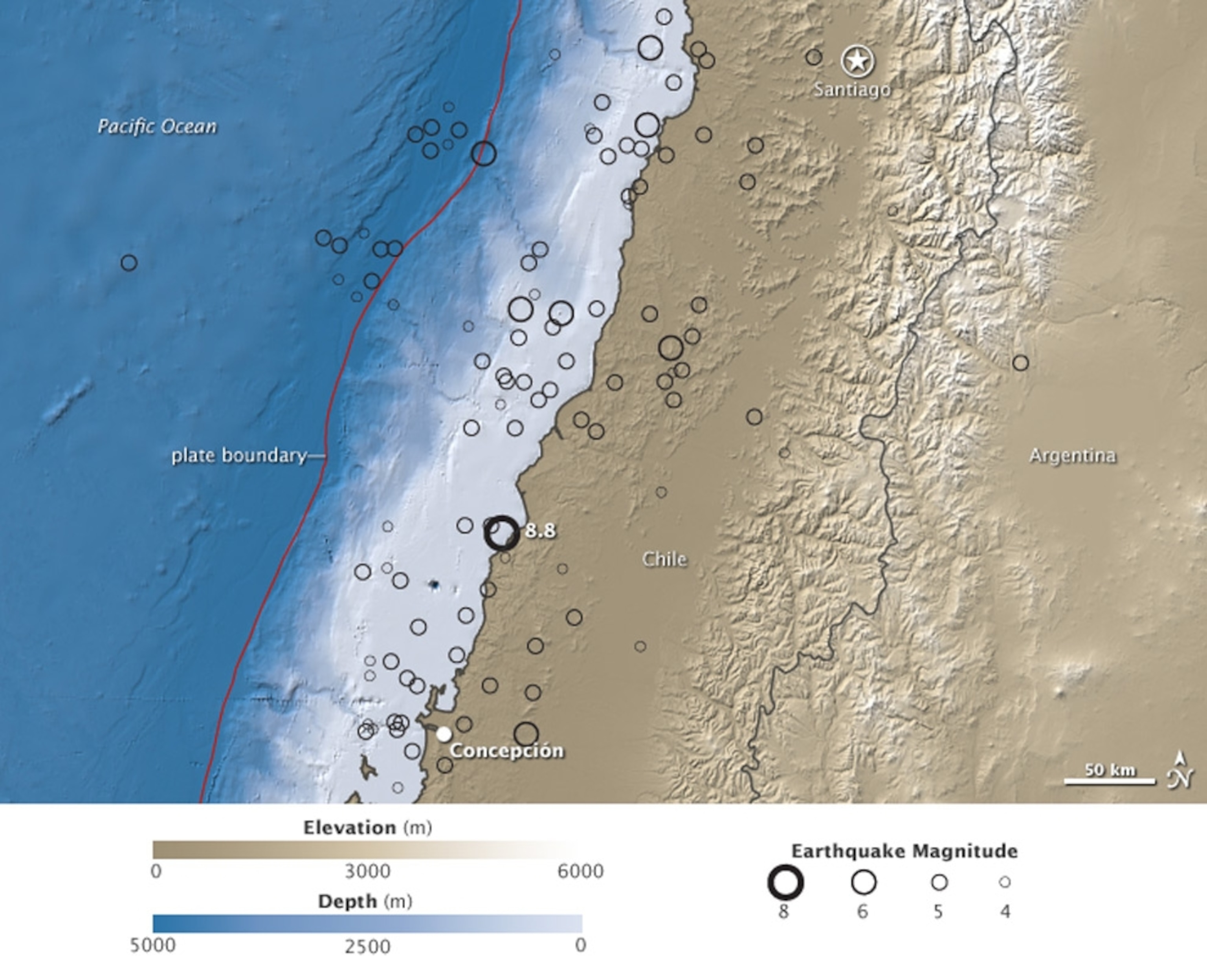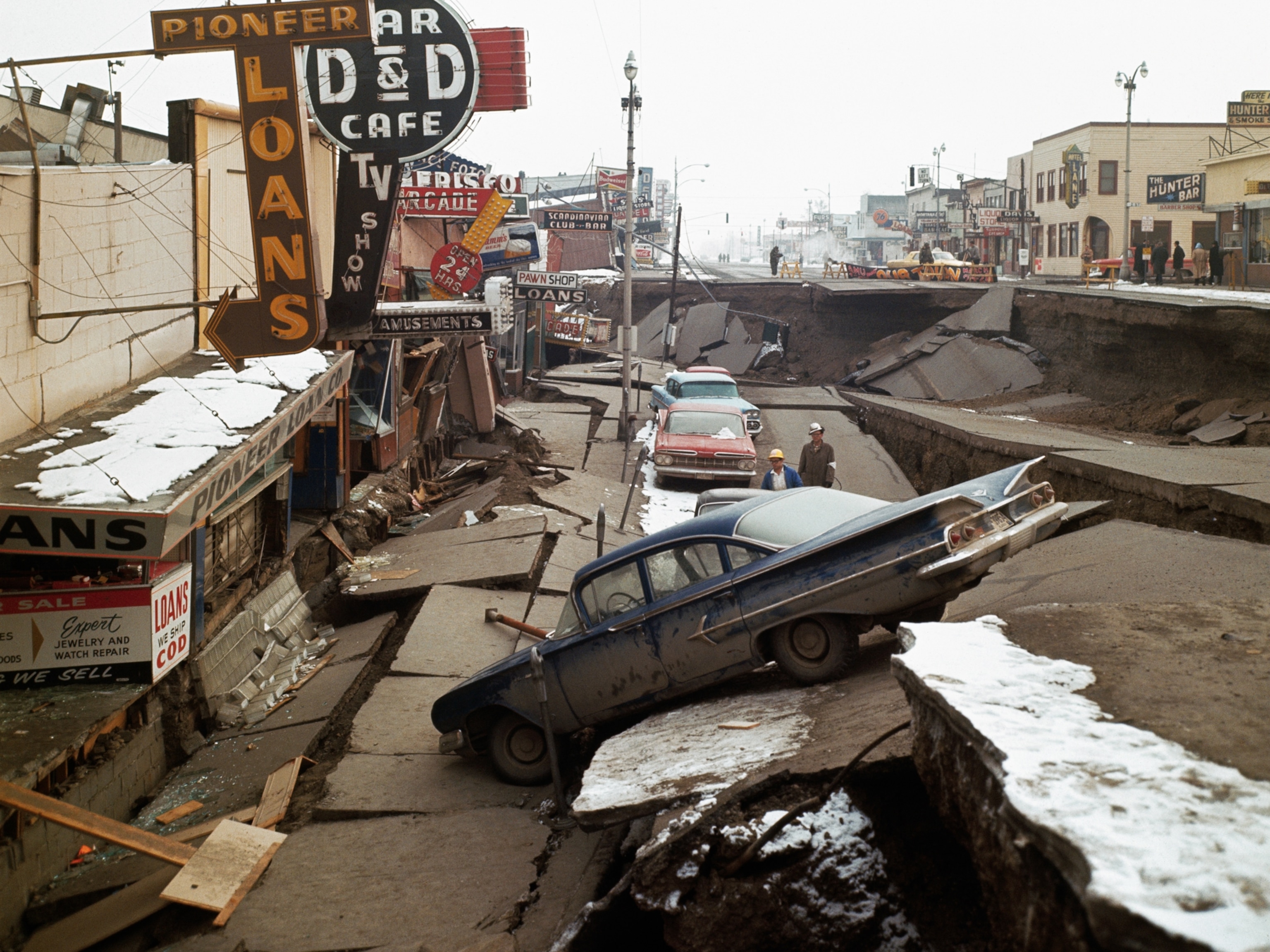
Chile Earthquake Altered Earth Axis, Shortened Day
Earthquake sped Earth's spin, figure skater style.
Saturday's Chile earthquake was so powerful that it likely shifted an Earth axis and shortened the length of a day, NASA announced Monday.
By speeding up Earth's rotation, the magnitude 8.8 earthquake—the fifth strongest ever recorded, according to the USGS—should have shortened an Earth day by 1.26 millionths of a second, according to new computer-model calculations by geophysicist Richard Gross of NASA's Jet Propulsion Laboratory in California.
For comparison, the same model estimated that the magnitude 9 Sumatra earthquake in December 2004 shortened the length of a day by 6.8 millionths of a second.
(See Chile earthquake pictures.)
Gross also estimates that the Chile earthquake shifted Earth's figure axis by about three inches (eight centimeters).
Deviating roughly 33 feet (10 meters) from the north-south axis around which Earth revolves, the figure axis is the imaginary line around which the world's unevenly distributed mass is balanced.
To explain the difference, Keith Sverdrup, a seismologist at the University of Wisconsin-Milwaukee, likened Earth to a spinning figure skater holding a rock in one hand. The rotational axis of the skater is still down the middle of the body, he said, but the skater's figure axis is shifted slightly in the direction of the hand holding the rock.
How Chile Earthquake Shortened Day
Just how did the Chile earthquake give Earth a bit of a turbo boost?
To explain, Sverdrup, who wasn't involved in the NASA calculation, turned again to the image of a spinning figure skater. "As she pulls her arms in, she starts rotating faster."
Likewise, as a portion of Earth's mass drew in ever so slightly and quickly during the Chile earthquake, the planet began spinning a bit quicker.
The Chilean quake was a so-called thrust earthquake, which occurs when a large section of the Earth's surface—in this case, the Nasca tectonic plate—dives beneath an adjacent plate. This process, called subduction, can cause earthquakes and volcanic eruptions (learn about plate tectonics).
"The layer of rock on the [Nasca plate] dove down into the Earth's interior, and that's like the skater pulling her arms in toward her body," Sverdrup said.
Only thrust earthquakes, with their inward motion, can shorten Earth days. Other types of earthquakes, such as horizontal strike-slip quakes, in which two plates slide horizontally past one another, don't affect Earth's rotation.
Currently, scientists can measure the length of an Earth day with an accuracy of only about 20 millionths of a second, so the shortened day caused by the Chile earthquake can be estimated but not measured.
But "that doesn't mean that the effect isn't real," Sverdrup said—though it is ephemeral. The shortening of Earth's day caused by the Chilean earthquake won't be permanent, although exact duration of the effect can't be measured.
Thrust earthquakes aren't the only phenomena that can shorten, or lengthen, Earth days. Volcanic eruptions or tidal effects from the moon can also cause such effects.
2010 Chile Earthquake Born in 1960?
The recent Earth-axis jolt may have been the result of stress buildup from a magnitude 9.5 quake that struck Chile in 1960, scientists announced in a separate study yesterday.
"The story is quite similar to the December 26, 2004, magnitude 9.0 Sumatra earthquake, which was followed by a magnitude 8.7 quake on [the Sumatra fault's] southern end on the 28th of March 2005," geologist Jian Lin of Woods Hole Oceanographic Institution in Massachusetts said in a statement.
"The only difference is that it took 50 years for the northern neighboring section of the 1960 [Chile] earthquake to rupture, while it took only three months for the southern adjacent segment to rupture in Sumatra."
It's unclear why the Chile fault took so much longer than the Sumatra fault to "follow up," Lin added.
"But even 50 years is short enough [to fall within] a person's lifetime," he said. "Thus, we should consider the earthquake-interaction possibility seriously."





